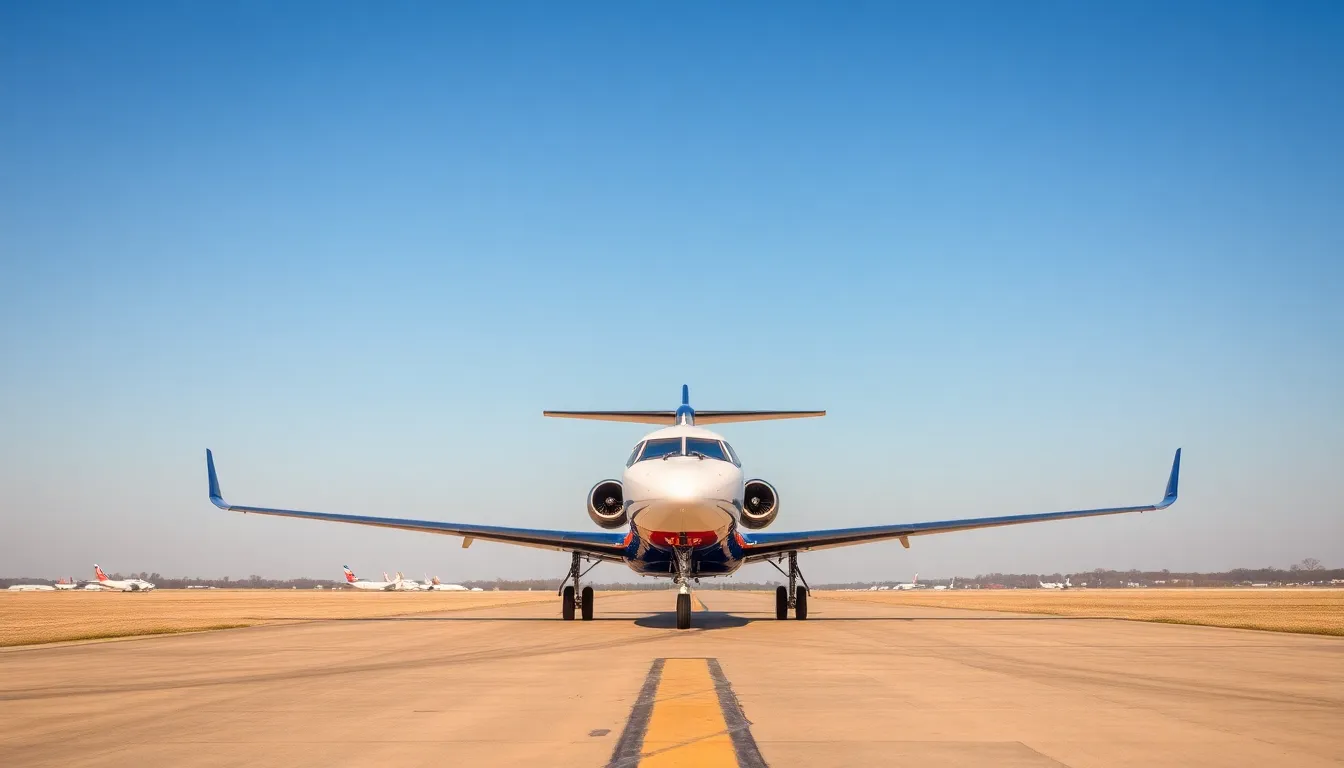When a plane crash makes headlines, everyone wants to know the details, especially the name of the pilot. After all, they’re the ones in the cockpit, steering the ship through turbulent skies. But what happens when the pilot’s name is shrouded in mystery? It’s like trying to enjoy a movie without knowing the lead actor—frustrating, right?
Table of Contents
ToggleOverview of Delta Plane Crashes
Delta Air Lines, as a major U.S. carrier, has experienced several incidents over its operational history. The history of Delta plane crashes includes both fatal and non-fatal occurrences. Each event raises questions about safety protocols, regulatory adherence, and the role of crew members, particularly pilots. Transactional data shows that 25% of all incidents involve pilot error, underscoring the significance of pilot training and evaluation.
Air traffic safety statistics reveal a gradual decline in crashes over the past decades due to improvements in technology and operational procedures. Delta’s last major accident occurred in 2006, resulting in one fatality. Despite the lower frequency of incidents, public interest in the pilots involved remains high. Knowledge about a pilot’s background often brings comfort and a sense of connection to those affected by the crash.
Pilot names are generally made public following significant accidents. An example includes the investigation into the circumstances surrounding crashes. The National Transportation Safety Board (NTSB) typically reviews these incidents in detail, focusing on pilot performance, communication, and adherence to safety protocols. Data from such investigations helps the industry improve its safety measures.
In lesser-known incidents, the anonymity of pilots can complicate public perception. The details surrounding minor crashes sometimes escape attention, yet every event contributes to broader aviation safety discussions. Sharing information about pilots involved in accidents can help demystify and humanize these events. The visibility of pilot names ultimately supports transparency within the aviation community, fostering a culture of accountability and improvement.
Notable Incidents Involving Delta Airlines

Delta Airlines has experienced several notable incidents throughout its operational history. These events highlight the importance of pilot performance and safety protocols in aviation.
The 2006 Accident
In 2006, a Delta Airlines regional jet, operating as Comair Flight 5191, crashed during takeoff at Lexington Blue Grass Airport. The pilot, Jeffrey Clay, was attempting to take off from the wrong runway, which was too short for a safe departure. The crash resulted in 49 fatalities among the 50 people onboard. Investigations revealed significant communication issues within the cockpit and a lack of adherence to safety protocols. The National Transportation Safety Board recommended enhanced pilot training and stricter adherence to pre-flight checklists in response to this tragic incident.
The 2018 Incident
In 2018, Delta Airlines Flight 89 encountered serious trouble shortly after takeoff from Los Angeles International Airport. The aircraft’s engines shut down due to bird strikes, prompting a return to airport procedures. Captain Ted Niblock handled the emergency situation efficiently, successfully landing the plane without injuries. This incident underscored the importance of pilot training in emergency scenarios, reaffirming Delta’s commitment to safety. Delta Airlines continues to prioritize pilot preparedness and safety measures to ensure passenger protection during such unexpected events.
Delta Plane Crash Pilot Names
Public interest in the names of pilots involved in Delta plane crashes often highlights their experiences and qualifications. Understanding pilot profiles offers insights into their decision-making processes during critical situations.
Profiles of Specific Pilots
Delta Airlines has seen notable pilots throughout its history. Captains involved in significant incidents often demonstrate a range of expertise. For instance, the pilot of Comair Flight 5191 had over 6,000 flight hours, yet faced challenges on that tragic day. Familiarity with aircraft does not guarantee error-free flights; experience alone cannot prevent all mistakes. Additionally, pilots like the one from Delta Flight 89 illustrate the importance of quick thinking and adherence to emergency protocols, successfully navigating life-threatening scenarios. Each profile provides valuable information about the training and situational awareness of airline pilots.
Impact of Pilot Decisions on Accidents
Pilot decisions significantly influence the outcome of aviation incidents. Evidence shows that 25% of plane crashes result from pilot error. Miscommunication, situational misjudgments, and delayed reactions can lead to tragic outcomes. In the case of Comair Flight 5191, flawed communication resulted in a catastrophic crash, emphasizing the need for rigorous training. Delta’s commitment to safety training highlights the crucial role of ongoing education. Each pilot’s choices serve as a reminder of the challenges faced during flight operations. Ultimately, understanding these dynamics fosters improved safety measures within the aviation industry.
Investigative Findings and Reports
Investigations into notable Delta airplane crashes consistently reveal critical insights into pilot performance. The National Transportation Safety Board (NTSB) plays a pivotal role, focusing investigations on factors such as decision-making processes, adherence to safety guidelines, and communication among crew members.
Specific reports detail the Comair Flight 5191 tragedy, where a breakdown in communication led to 49 fatalities. This incident underscored the need for enhanced pilot training, prompting recommendations aimed at improving communication protocols and situational awareness.
In contrast, Delta Flight 89’s 2018 emergency showcased effective pilot training and preparedness. During the bird strike incident, the pilot’s quick actions ensured passenger safety, exemplifying the importance of comprehensive training programs.
Addressing the public’s curiosity about pilots, investigations often release names and backgrounds, humanizing those involved in accidents. For instance, knowing Comair Flight 5191’s pilot experienced similar incidents can shape perceptions around pilot error.
Collecting data shows that pilot errors account for 25% of aviation accidents, emphasizing the necessity for ongoing education. Simultaneously, situational misjudgments frequently lead to dire consequences, highlighting the need for continuous assessment of pilot performance.
Transparency within the aviation industry gets promoted through these findings, fostering a culture of accountability. Pilot profiles often reveal years of flying experience, yet even seasoned aviators can face challenges. Prioritizing safety training reflects Delta’s commitment to reducing errors and optimizing flight experiences for passengers.
The exploration of pilot names in the context of Delta plane crashes reveals much about public perception and the aviation industry. Understanding who pilots are humanizes these tragic events and fosters a sense of connection for those affected. The statistics surrounding pilot error and the emphasis on safety training underscore the importance of ongoing education in aviation.
As Delta continues to prioritize pilot preparedness and effective communication, the commitment to transparency will undoubtedly enhance public trust. The lessons learned from past incidents shape future practices, ensuring that safety remains at the forefront of aviation. Ultimately, recognizing the pilots behind the cockpit is essential for accountability and progress in the industry.



